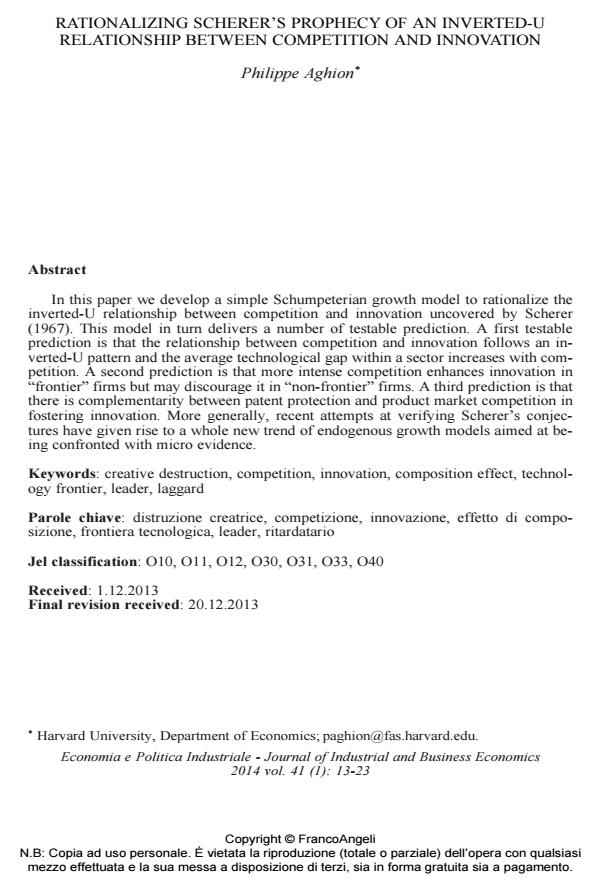Rationalizing Scherer’s prophecy of an inverted-U relationship between competition and innovation
Journal title ECONOMIA E POLITICA INDUSTRIALE
Author/s Philippe Aghion
Publishing Year 2014 Issue 2014/1
Language Italian Pages 11 P. 13-23 File size 78 KB
DOI 10.3280/POLI2014-001002
DOI is like a bar code for intellectual property: to have more infomation
click here
Below, you can see the article first page
If you want to buy this article in PDF format, you can do it, following the instructions to buy download credits

FrancoAngeli is member of Publishers International Linking Association, Inc (PILA), a not-for-profit association which run the CrossRef service enabling links to and from online scholarly content.
In this paper we develop a simple Schumpeterian growth model to rationalize the inverted-U relationship between competition and innovation uncovered by Scherer (1967). This model in turn delivers a number of testable prediction. A first testable prediction is that the relationship between competition and innovation follows an inverted- U pattern and the average technological gap within a sector increases with competition. A second prediction is that more intense competition enhances innovation in "frontier" firms but may discourage it in "non-frontier" firms. A third prediction is that there is complementarity between patent protection and product market competition in fostering innovation. More generally, recent attempts at verifying Scherer’s conjectures have given rise to a whole new trend of endogenous growth models aimed at being confronted with micro evidence.
Keywords: Creative destruction, competition, innovation, composition effect, technology frontier, leader, laggard
Jel codes: O10, O11, O12, O30, O31, O33, O40
- How does economic policy uncertainty affect corporate green innovation? Evidence from China Shengling Zhang, Zihao Wu, Wei Dou, Yu Hao, in Journal of Environmental Planning and Management /2025 pp.1363
DOI: 10.1080/09640568.2023.2286926 - History, statistics and theory: Frederic M. Scherer and modern industrial organization Giovanni B. Ramello, Francesco Silva, in ECONOMIA E POLITICA INDUSTRIALE 1/2014 pp.5
DOI: 10.3280/POLI2014-001001
Philippe Aghion, Rationalizing Scherer’s prophecy of an inverted-U relationship between competition and innovation in "ECONOMIA E POLITICA INDUSTRIALE " 1/2014, pp 13-23, DOI: 10.3280/POLI2014-001002